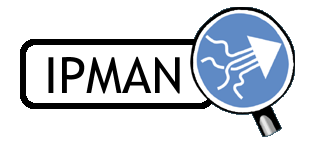 |
|
|
It has been estimated that within 5-10 years the volume of TCP/IP-data traffic will grow from the present level 100 or even 1000 times, one of reasons being the growing supply of new multimedia services. The dramatic growth of IP-based traffic will significantly change the traditional network architecture. The traditional network management tools cannot be applied to managing the massive IP-networks with a new architecture. Therefore the knowledge on this area has to be improved in the universities and enterprises.
The objective of IPMAN is to design Content Management System performing Content Management. CMS manages content through Indexing, Search, Content Classification, Versioning and IPR Management service components. CMS is designed to be integrated with TriMedia service platform. CMS together with TriMedia form the Content Management Framework.
The target of the project is to research and develop a network management paradigm for massive IP networks. Today's routed IP networks suffer from serious problems related to scalability, manageability, reliability and cost. The solution for this problem is important for the business world as networks and distributed processing systems have become critical factors for success. This has resulted in companies and organizations developing large and complex networks with an increasing number of applications and users. The new WWW and multimedia applications, faster data transmission in mobile networks and IP telephony require higher capacity. The effective use of network facilities in business can improve a competitive position, create new market opportunities and afford efficient communications between business units and customers. Automated network management is needed to ease the network management as networks have become larger and more complex. Network management views the computing environment as a collection of co-operating systems connected by various communication mechanisms. Effective network management adapting to business strategy requires the right abstraction level of information, information at the right time and information in an easy-to-use format. It contains functions such as technology selection, network automation, capacity planning, predictive problem avoidance and sophisticated trouble-shooting. These functions all require information that goes beyond the data available to most of network management staff. The main impact of the Internet is that it enables the rise of virtual business and services. This means that there will be an explosion in data volumes - new Internet related services enable more customers added with more interactions with customers and more data per interaction. PC will no longer be the dominant access device, the network will be the center of everything. There will be more need for mobile and wireless infrastructure. The idea is that data will find you wherever you are. When there are no connectors, it means lighter, cheaper and simpler devices. IPMAN project has studied the models developed to classify and order network management problems, described some protocols used for network management and some possible future trends in network management. IPMAN project has also studied the reference model suggested by professor Olli Martikainen. In this reference model, described in figure 1, network management is divided into four levels. Figure 1. Olli Martikainen's reference model
The reference model has been developed further, the modified reference model can be seen in figure 2. Figure 2. Modified reference model
All the layers of the reference model are studied in the project. The main focus is on service and content management layers. Network and traffic management layers have been under research for longer time by many researchers. Therefore it is most beneficial to concentrate on the two upper layers. Also the present commercial network management tools are under research. |
[Home][About][Projects][People][Investors][Site Map]
(c) Telecommunications Software and Multimedia
Laboratory
Helsinki University of Technology